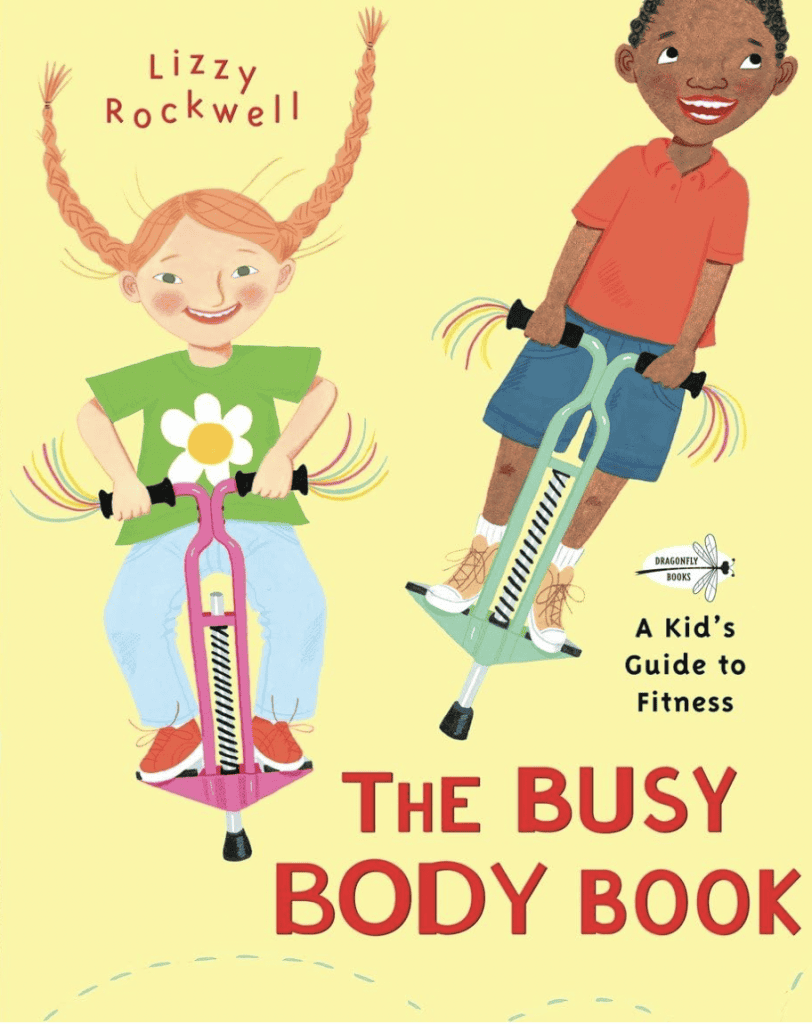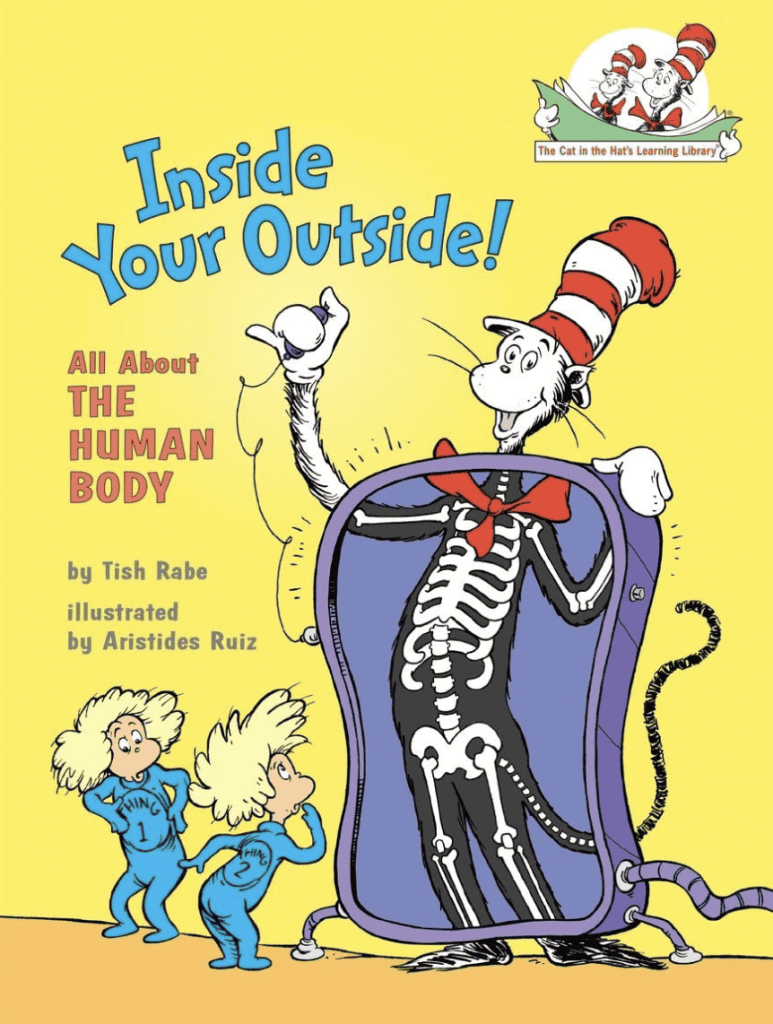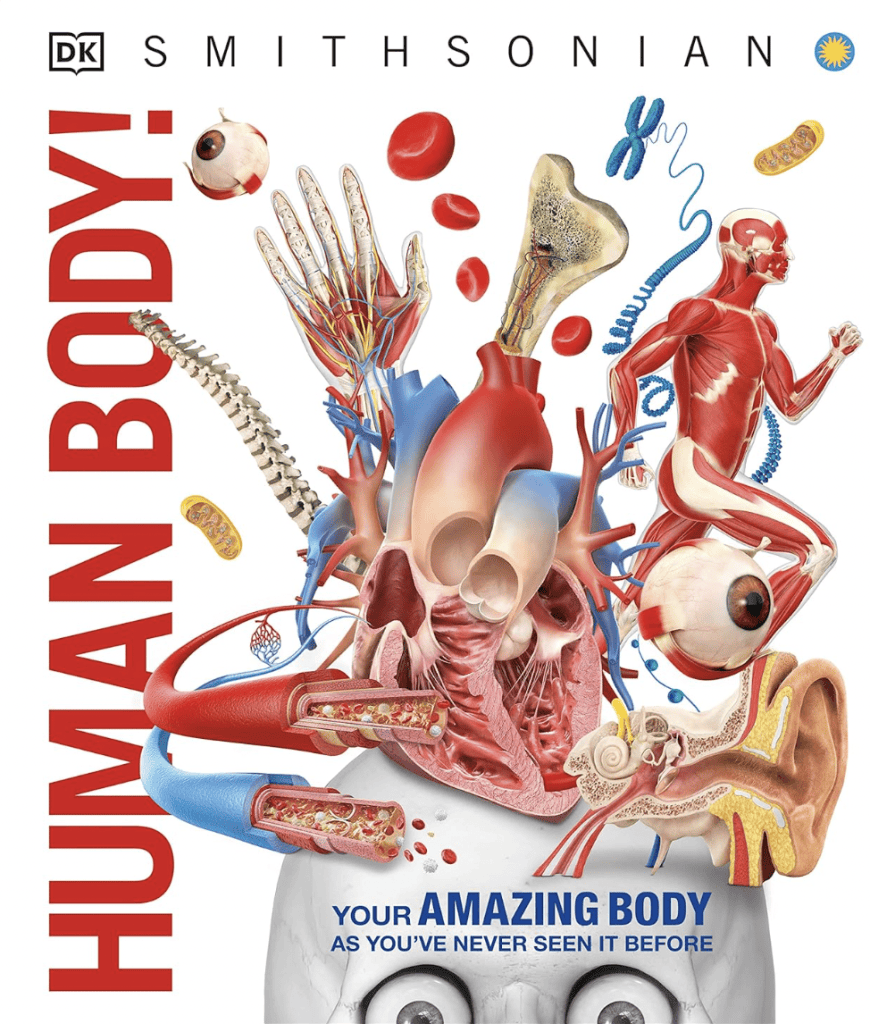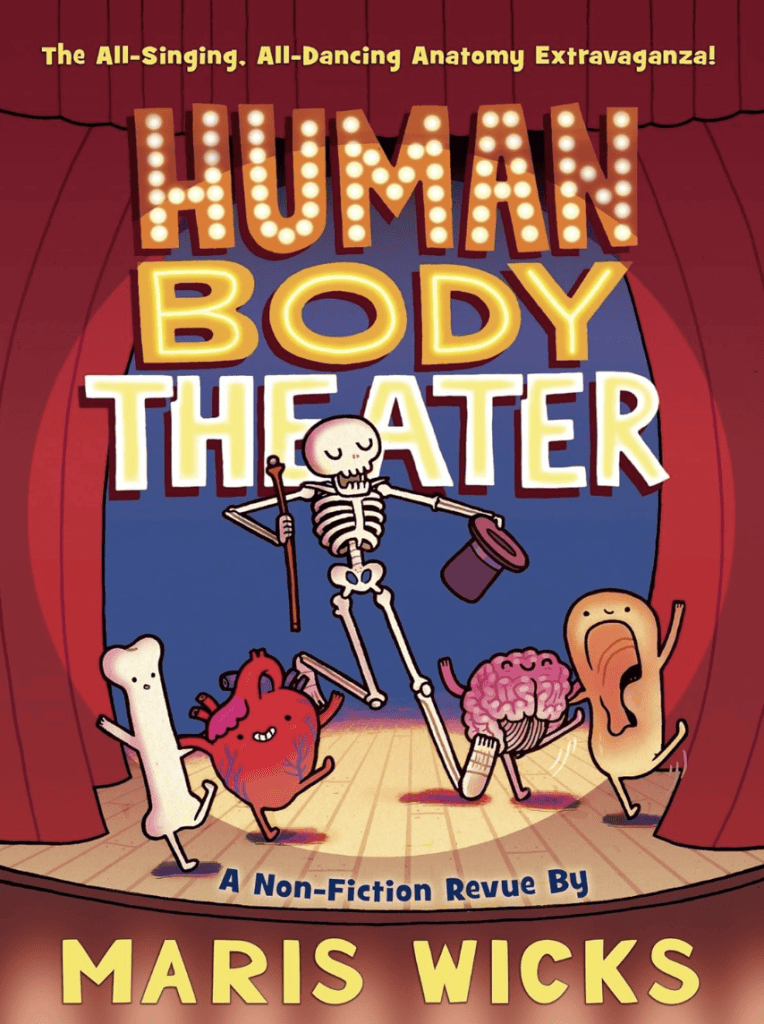Free Printable Human Body Unit Study

Free Human Body Unit Study to Ignite Curiosity and Learn how Our Bodies Work
Are you looking for a human body unit study for your homeschool?
In this article, I am offering my Free Human Body Unit Study if you would like an open-and-go solution, but I also discuss various resources just in case you would like to build your own human body unit study.
My Human Body Unit Study is filled with free resources like videos to make learning visual, fun, and engaging for students. It is aimed at upper elementary to middle school-aged students and can even be used with high school students! It can be easily adapted for high school by adding independent reading or having students write a research paper on an anatomy topic of their choosing. The unit study can be used with a variety of homeschooling styles.
You can follow the outline in my free Human Body Unit Study printable, or feel free to use my free Unit Study Planner below to pick and choose which resources in this article you will use for your own unique unit study.
To help you stay organized, I’ve taken the resources listed in this article and made a Printable Unit Study PDF with various “sections.” The sections do not have to be completed in one day. You can move as quickly or as slowly as you wish, spending multiple days on certain topics if they are of interest to your child.
It is meant to be open-and-go, with minimal prep for busy families.
So let’s get started by talking about how you can use this free Human Body Unit Study and then discuss resources to build your own unit study. Either way, I hope you enjoy the recommendations!
How to Use Your Free Human Body Unit Study
This unit study includes a variety of free resources—suggested books (check your local library), videos, activities, and websites—to make learning about the human body fun and interactive for your whole family. Use this as a starting point to explore further and customize it to your child’s interests!
We keep it simple in our homeschool- we read lots of books together, do some hands-on activities, get some writing practice in, learn some math concepts, and possibly go on an educational outing. I use my unit study plans more like an outline rather than a rigid schedule or plan to follow. That is the freedom that homeschooling gives families!
I usually make a unit study and don’t confine us to a strict schedule- we like to “go down rabbit holes” as they come up. If my children find something particularly interesting, we research it further together. It’s so much fun to learn alongside my children!
The free Human Body Unit Study can be used in any way you choose. We are a relaxed homeschooling family, and I am a homeschool mom with ADHD. This makes it hard for me to stick to a rigid curriculum, and that’s why I love the way unit studies work for homeschooling.
You have a few options to access the links in the Human Body Unit Study PDF. You can upload it to Google Drive or upload it to a note-taking app like Goodnotes on your tablet so you can click the links.
I have also provided QR codes for all of the videos if you want to print the unit study out and point your phone or tablet at the code to be taken to the video. It is heavily video-based, so you could also hook your laptop up to your TV to watch the videos on a bigger screen.
Each section of the unit study focuses on a different topic. Sections begin with a short reading, followed by read aloud time for 10-20 minutes. Then there are suggested videos- ones for younger students and ones for older students. There are a few activities and website links sprinkled throughout as well.
I hope your family enjoys my unit study if you choose to complete it!
Now let’s talk about resources for you to build your own human body unit study.
Suggested Books for Planning Your Own Human Body Unit Study
Let’s start out by discussing some living books on the topic of the human body.
If you would like to make your own human body unit study, make sure to Download my FREE Unit study planner below:
Books For Younger Students:
The Busy Body Book: A Kid’s Guide to Fitness by Lizzy Rockwell
This engaging book explains how the body moves and stays active, connecting anatomy and everyday activities. Perfect for younger kids to learn about how their muscles and bones work together.
Look Inside Your Body by Louie Stowell
This interactive lift-the-flap book is perfect for hands-on learners. With fun illustrations and flaps to lift, kids can explore the body’s organs, bones, and other systems in a fun and engaging way.
Inside Your Outside by Dr. Seuss
This book explores the human body in a fun and engaging way, using rhymes and playful illustrations to explain organs, systems, and their functions. It simplifies complex biological concepts for young readers, making learning about the body entertaining and easy to understand.
A Drop of Blood by Paul Showers
This engaging and informative book explores the circulatory system, focusing on the role of blood in the body. It’s a perfect blend of science and storytelling.
The Magic School Bus: Inside the Human Body by Joanna Cole
This book follows Ms. Frizzle and her class as they shrink down and take a magical journey inside a student’s body. Through their adventure, they learn about the circulatory, digestive, and respiratory systems, as well as how the body works together to stay healthy.
Knowledge Encyclopedia Human Body! by DK Smithsonian
This a visually stunning reference book that uses detailed 3D illustrations and engaging explanations to explore the human body’s anatomy and functions. It covers everything from organs and systems to genetics and health, making complex topics easier to understand for readers of all ages. This would be a great book for older students too!
Books For Older Students:
The Way We Work by David Macaulay
This detailed book combines beautiful hand-drawn illustrations with comprehensive explanations of the human body. It’s perfect for older kids ready to dive deeper into anatomy and physiology.
Human Body Theater: A Non-Fiction Revue by Maris Wicks
A graphic novel-style guide to the human body, this book covers complex topics like the immune system, digestion, and the nervous system in a fun, approachable format that older students will enjoy.
The Magic School Bus Presents: The Human Body by Dan Green
Building on the beloved Magic School Bus series, this non-fiction companion book offers detailed facts and real-life photos to complement the series’ episodes about the human body.
Anatomy and Physiology for Kids by Kristie Wagner
This beginner’s guide to anatomy is designed for upper elementary and middle school students, breaking down complex systems into digestible sections with illustrations to match.
DK: The Human Body Book by Richard Walker and Steve Parker
This is a comprehensive guide featuring detailed illustrations and in-depth explanations of the body’s anatomy, systems, and functions. Combining stunning visuals with clear scientific information, it’s an excellent resource for older students and adults seeking a deeper understanding of how the body works.
Things to Watch for Your Human Body Unit Study

Here are some engaging and educational videos, YouTube channels, shows, and documentaries to complement your Human Body Unit Study. These resources will keep children engaged while teaching them about the body’s systems and functions.
YouTube Channels:
1. SciShow Kids:
- Perfect for younger learners, SciShow Kids features short, engaging videos on topics like the skeletal system, digestion, and the five senses. Search for videos like “Why Do We Have Bones?” and “How Does Your Stomach Work?” for a kid-friendly introduction to anatomy.
- Video: All About Your Body! | Human Body Compilation
- Playlist: Full Human Body Playlist
2. Operation Ouch!
- This fun, science-packed channel hosted by twin doctors covers everything related to health and the human body. Episodes include “What Happens When You Get a Cut?” and “How Does Your Brain Work?” Browse their channel and find fun and engaging videos to watch together, like their endocrine system playlist!
3. CrashCourse
- This is a channel designed for older students. CrashCourse’s Anatomy and Physiology series provides a deep dive into the systems of the human body, from the nervous system to the cardiovascular system and more. It’s fast-paced, engaging, and filled with illustrations and animations.
- Introduction to Anatomy & Physiology: Crash Course Anatomy & Physiology #1
- Full Anatomy and Physiology Playlist
Documentaries and Shows for your Human Body Unit Study:
Don’t forget to check if your local library has these DVDs available if you do not have the streaming services needed!
For Younger Students:
1. The Magic School Bus: Inside Ralphie Season One Episode Three (Netflix or DVD)
Join Ms. Frizzle and her class as they shrink down and explore inside a classmate’s body, from the bloodstream to the digestive system. These episodes are a hit with elementary-aged kids and make learning about science exciting and fun.
2. How Does Your Body Work? StoryBots (YouTube, Netflix, and/or DVD)
How Does Your Body Work? by StoryBots is a fun and colorful introduction to the human body, perfect for young learners. Through simple explanations and engaging illustrations, it explores how organs and systems work together to keep us healthy and active. We love StoryBots in our house!
3. BrainChild (Netflix or DVD)
This series explores how the different things work through fun experiments and interactive challenges. This show is so much fun! My kids really enjoy watching this show over and over again. The episode on Germs would be a great addition to a human body unit study. It explains the “good” and “bad” bacteria within our bodies.
For Older Students:
4. Brain Games (National Geographic)(Disney+ or DVD)
This series explores how the human brain works through fun experiments and interactive challenges. Perfect for older students interested in the brain’s inner workings and psychological experiments. My children love this show- they have replayed the episodes many times!
5. Human: The World Within (Netflix or DVD)
Human: The World Within is a captivating Netflix series that explores the intricate systems of the human body, such as the heart, brain, and immune system, highlighting how they connect us all and enable extraordinary feats. Through stunning visuals and personal stories, it reveals the science behind what makes us human. Make sure to screen this, as episode 1 goes into pregnancy, birth, and the science of attraction. See if it is age-appropriate for your learners.
6. The Body (Curiosity Stream or DVD)
This is available on Curiosity Stream– if you don’t have Curiosity Stream, I highly recommend it. It is packed with documentaries and costs less than $30 for the whole year! The Body is an engaging series that elaborates on the inner workings of the body’s systems, revealing how they collaborate to maintain balance and sustain life. It combines fascinating visuals with scientific insights to showcase the complexity of human biology.
7 Example Activities for a Human Body Unit Study

Hands-on experiences and engaging activities can make homeschool science exciting and memorable. Here are some learning activities, including creative projects, experiments, and worksheets to help deepen understanding of anatomy and physiology in a fun way:
1. Build a Model Skeleton
- Use butcher paper or brown wrapping paper to trace your whole body, and then draw your skeleton! If you don’t have butcher paper or brown wrapping paper, have your child pick a hand or foot to trace on a piece of paper. Then, draw the bones for that part of the body. You may want to do a Google search together to see exactly what bones are in that part of the body or consult any books you have available on the subject. Hang this on the wall somewhere visible for the rest of this unit study!
- For a printable option, download and assemble a paper skeleton puzzle here.
2. Test Your Muscles
- Make a list of exercises like push-ups, squats, or even just walking or running. As your children perform them, ask them which muscles are being engaged. This is not only educational, but it creates body awareness in children.
3. Make a Digestive System Craft
- Create a life-sized digestive system model using construction paper, fabric, or clay to represent each organ. Kids can label and connect the parts to learn how food travels through the body.
3. DIY Blood Composition Experiment
- Use common household items to make a visual representation of blood components. For example:
- Red blood cells = red beads or pom-poms
- White blood cells = white beads
- Platelets = yellow beads
- Plasma = water with yellow food coloring or vegetable oil
- Discuss the function of each component and why they’re essential for the body.
4. Measure Your Lung Capacity
- Use a balloon and a measuring tape to explore how much air your lungs can hold. Have kids take a deep breath, blow into the balloon, and measure its circumference. Compare results among family members.
5. Heartbeat and Pulse Activity
- Teach kids how to find their pulse and measure their heartbeat. Have them try jumping jacks or other exercises, then measure their pulse again to observe how exercise affects the heart rate.
6. Worksheets and Coloring Pages
- Use printable resources to reinforce learning, such as anatomy coloring pages, crosswords, and labeling worksheets. These are especially helpful for reviewing concepts. Just head on over to Teachers Pay Teachers and find what you are looking for!
Places to Go for a Human Body Unit Study

Homeschool “field trips” or outings are great learning experiences and ignite passions in children they may not have discovered otherwise. This is a fantastic way to bring your homeschool human body unit study to life. Kids can see how the human body works and get some hands-on learning.
Here are some ideas to for inspiration:
1. Science Museums
Many science museums feature exhibits about the human body, including life-size models, interactive displays, and hands-on activities. This is an easy way for kids to get hands-on learning experiences. See if there are any science museums near you!
2. Health or Medical Museums
Visit specialized museums such as the Mütter Museum in Philadelphia, which showcases fascinating medical specimens and artifacts, or the International Museum of Surgical Science in Chicago for an in-depth look at medical history. Check out what museums are local to you!
3. Local Universities or Medical Schools
Some universities host open house events or public lectures where older students can see anatomy labs, medical tools, and research in action. Contact a local institution to inquire about tours if your child is interested.
4. Hospitals or Clinics
Some hospitals offer tours for educational purposes, particularly for younger students interested in learning about healthcare careers or how different departments (e.g., radiology, pediatrics) function.
5. Parks and Nature Centers
While not directly focused on the human body, hiking trails and fitness stations in parks provide opportunities to discuss the importance of physical activity for health.
Websites for Your Human Body Unit Study

Here’s a list of quality websites offering educational articles, interactive tools, games, and quizzes to enhance your Human Body Unit Study. These resources cater to a variety of age groups and learning styles.
1. KidsHealth
- Best For: Younger students
- What It Offers: Articles, videos, and quizzes designed for kids, covering topics like how the body works, staying healthy, and body systems. The site features engaging illustrations and kid-friendly explanations.
- Tip: Check out the “How the Body Works” section, which includes videos and interactive activities for a fun learning experience.
2. InnerBody
- Best For: Middle and high school students
- What It Offers: An interactive anatomy guide with detailed explanations of body systems and organs. The site includes 3D models for exploration and links to further resources.
- Tip: Use this site as a reference for research projects or for students curious about specific organs and systems.
- Best For: Elementary and middle school students
- What It Offers: Fun, educational articles and videos about the human body, including amazing facts and activities that make learning exciting. There are fun quizzes too. Make sure to check out their “Weird but True” articles. They have “Weird but True” books as well, and my kids love them! Check your local library to see which titles they have. The books make great gifts too!
- Tip: Search for human body-related topics like “how your heart works” or “amazing facts about the brain.”
4. The Human Body by BBC Bitesize
- Best For: Middle and high school students
- What It Offers: Interactive lessons, animations, and quizzes covering all major body systems. Content is engaging and presented in manageable chunks for easy learning. You will have to use a VPN to view the videos if you are in America or outside of the UK.
- Tip: Explore their in-depth sections on biology topics, such as cells, organs, and the digestive system, the circulatory system, and more!
5. ABCYa!
- Best For: Elementary to Middle School Age
- What It Offers: ABCYa! offers free games that make learning fun, including puzzles and matching games focused on various topics by grade level up until 6th grade.
- Tip: Play “Learn the Skeletal System” on ABCYa! This game reinforces knowledge of the skeletal system. ABCYa! is a great free resource for homeschooling. It is free to use on a desktop or laptop, but if you want an ad-free experience, to play in full screen mode, or to use it on a tablet- you’ll have to pay for a subscription.
6. BrainPop
- Best For: Elementary and middle school students
- What It Offers: Short animated videos, quizzes, and activities on body systems like the circulatory, nervous, and digestive systems.
- Tip: Some content is behind a paywall, but free videos and a free trial are available.
- Best For: Middle and high school students
What It Offers: Detailed articles, interactive tools, and videos about the brain and nervous system, including functions, disorders, and scientific research.
Tip: Use the 3D Brain tool to explore brain anatomy and functions interactively. All content is free and designed to support learning at various levels.
Final Thoughts: Human Body Unit Study

Learning about the human body can be an incredible journey for you and your children, sparking curiosity and awe for the amazing ways our bodies work. My free Human Body Unit Study printable is designed to serve as your guide, offering a curated list of resources and activities in order to make this unit study engaging and comprehensive.
Remember, you can adapt this engaging homeschool unit study to suit your family’s unique needs and learning style. Keep it simple enough that it doesn’t feel overwhelming to implement. Whether you complete every activity or choose just a few, the most important part is enjoying the process of learning together.
Feel free to expand on these ideas, follow your children’s interests, and explore new questions that arise along the way. The human body is a fascinating topic with endless opportunities for discovery—have fun exploring it as a family!
Don’t forget to stop by my Free Printables Library for help staying and getting organized with my planner printables, homeschooling printables, and more!
Stay inspired along your homeschooling journey by visiting homeschooling blogs often, reading motivational homeschooling books, and staying connected to your local homeschooling community.
Do you have any additional resource ideas for a Human Body unit study? Comment down below, and I’ll be sure to add it to the list!




















